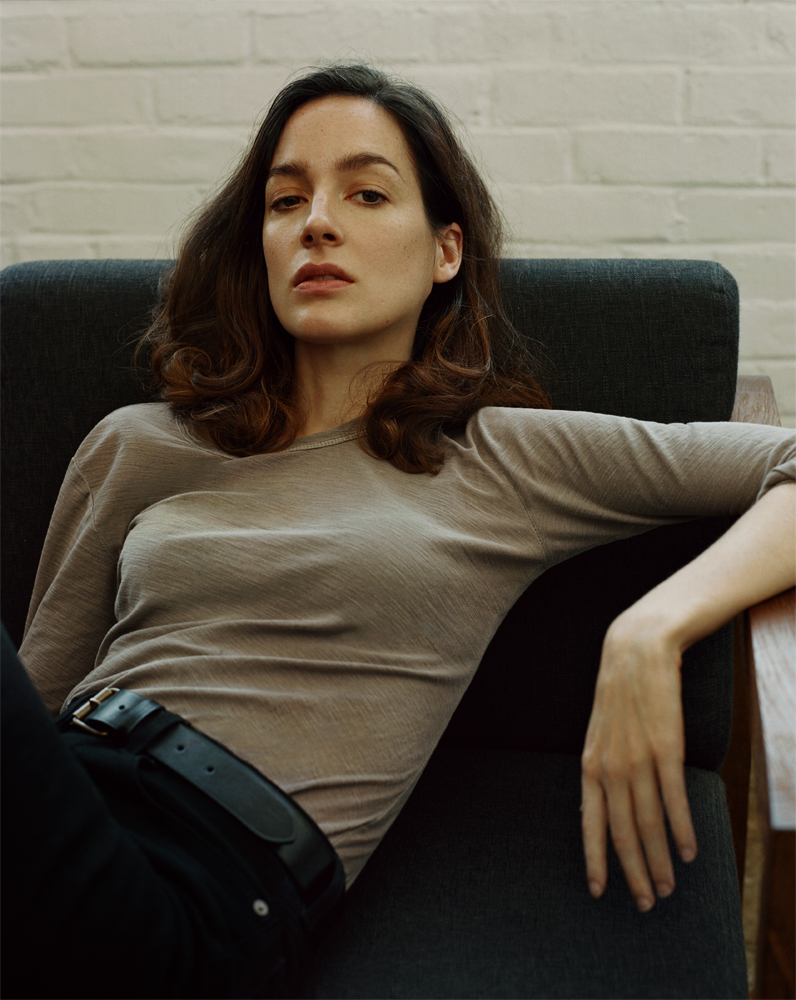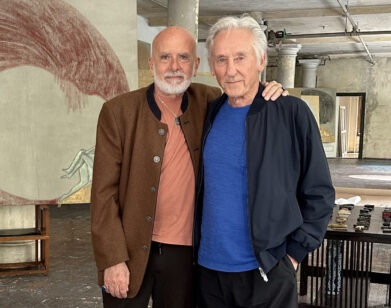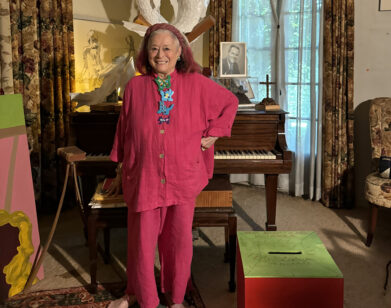Julie Beaufils
Julie Beaufils has faith in painting. She believes that images embodied in the vibrant colors and rich textures of this oily substance have the potential to create a heightened reality. The 29-year-old French native’s love of the medium began as a child, spending hours in museums with her parents looking at impressionist and surrealist works. It was then that she decided to become a painter. Of course, Beaufils’s techno-cultural era runs at a very different pace than those of the 19th- and 20th-century painting movements she loved. Striving to keep this traditional craft vital for her own time, she paints screenshots of the TV shows and music videos from her youth.
The artist began studying at the prestigious École nationale supérieure des Beaux-Arts in Paris at 18. The school’s lack of structure and minimal tuition allowed her to pursue the romantic ideal of the loner artist free to experiment, fail, and, in her own words, “produce shitty pieces.” Beaufils describes this experience as the antithesis of her time later at the University of Southern California, where she enrolled for an MFA. In a widely publicized protest in 2015, she and the entire class of first-year MFA students dropped out over the administration’s watering down of the program and its funding packages. “We were cheated,” Beaufils recalls. “It’s an example of how an artist’s practice often goes unrecognized and disrespected because it does not fit into the grid of the system.” As it turned out, Beaufils hardly needed an advanced degree. In the past two years, she has exhibited her paintings all over the world, including a group show this past summer at La Kunsthalle Mulhouse in France followed by a solo show at Galerie Balice Hertling in Paris.
Beaufils paints primarily in a muted palette. Her lyrical, sparsely elegant forms lie somewhere between figuration and abstraction, and her canvases often possess the fast, fleeting strokes of sketch drawing. In this way, her youth-centric compositions can feel like the offspring of Raymond Pettibon and Jean Cocteau. Take, for example, her 2016 work Aura 1, painted from a YouTube clip of a high school drama that Beaufils watched religiously as a teen. The scene depicts two students in a passionate embrace. Clouds of white paint block out parts of the image, evoking the haziness of memory as well as the imperfections of low-resolution online video. Beaufils’s inclusion of computer and iPhone screens is an acknowledgement of the ways in which digital images dominate visual culture; yet, by recapturing these images in the antithetical medium of painting, the artist gives them a haunting and, perhaps, individualistic second life. Her globs of oil paint, heavy impasto, thick swathes of gesso, gestural brushstrokes, and subdued pastel colors vibrate with intense physical sensations. “The aura of painting, its substance and presence, is precious,” she says. “And this is an essential function of the medium: it’s beautiful because it returns to primitive and powerful emotions.” Unlike many of her peers, she isn’t attempting to critique youth culture, consumerism, or the media. Rather, for her, painting gives form to those indescribable desires we feel while listening to music, reading magazines, or watching TV as a teenager. As she says, “It’s about being able to be naive again and having the courage to stop hiding behind a cynical pose.”







